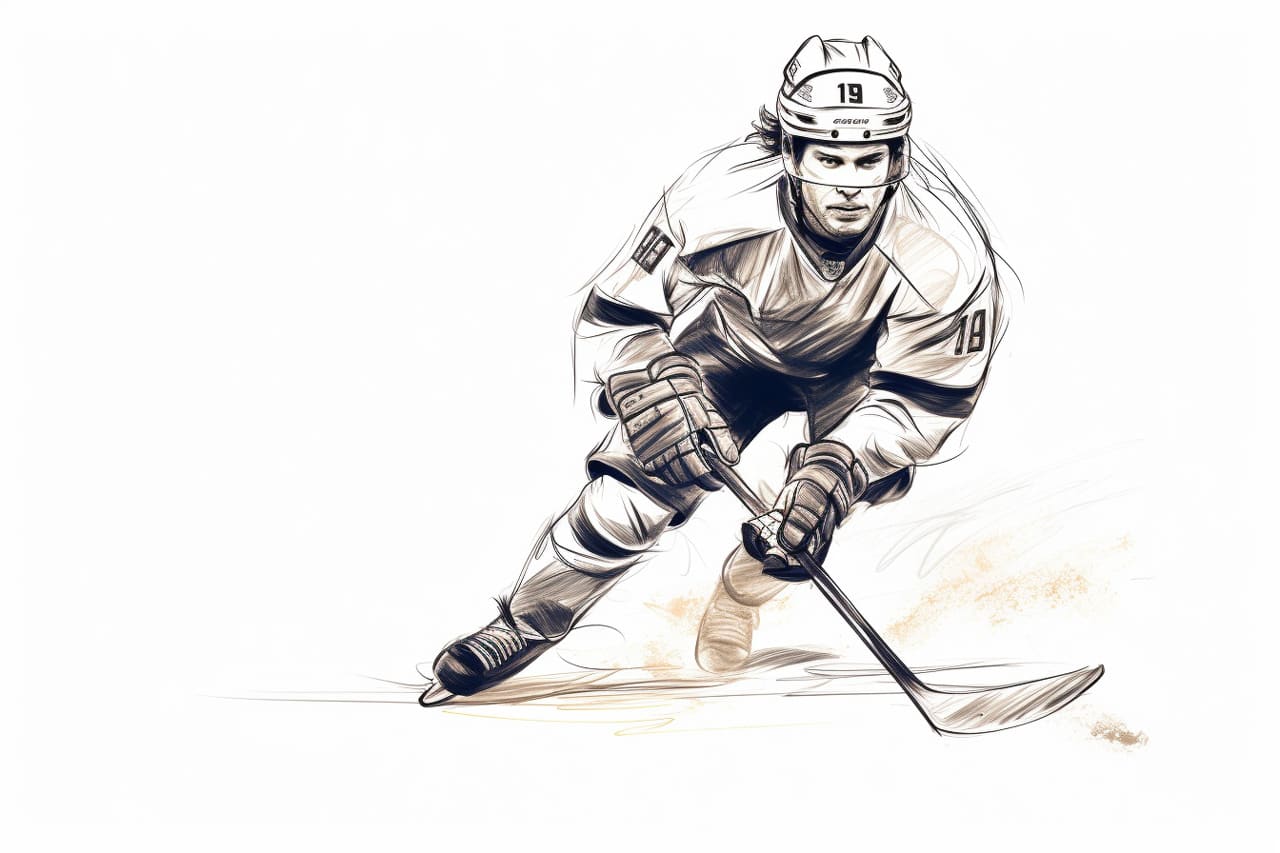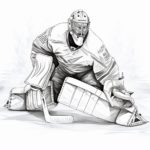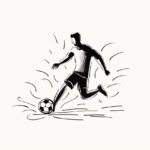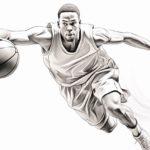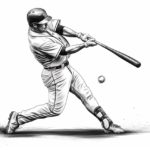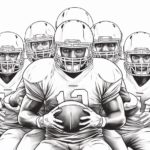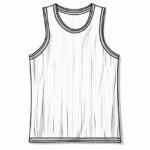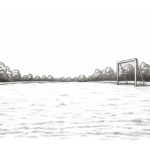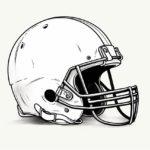Drawing a hockey player is an exciting and dynamic challenge that allows artists to capture the speed, intensity, and grace of this fast-paced sport on paper. From the sleek curves of the skates slicing through the ice to the powerful stance of the player holding their stick ready for action, there are endless opportunities to showcase movement and athleticism in your artwork. In this guide, we will explore the key elements and techniques needed to master the art of how to draw a hockey player, from capturing the intricate details of their equipment to conveying the energy and passion of the game. So grab your pencils, sharpen your skills, and get ready to bring the thrill of the rink to life on your canvas!
Materials Required
To draw a hockey player, you will need the following materials:
- Drawing paper or sketchbook
- Pencils (various grades for shading and outlining)
- Eraser (to correct mistakes)
- Sharpener (to keep your pencils sharp)
- Ruler (for straight lines and measurements)
- Colored pencils or markers (optional for adding color)
- Reference image of a hockey player (for inspiration and guidance)
- Drawing board (to provide a firm surface to work on)
- Fixative spray (optional, to protect your finished drawing):
How to Draw a Hockey Player: a Step-by-step Guide
Step 1: Sketch the Basic Body Shape
Start by drawing an oval for the head and a larger oval for the body. Add two lines to indicate the center of the face and body. Sketch two smaller ovals for the shoulders and two longer ovals for the upper arms. Draw two more ovals for the hips and two lines for the legs.
Step 2: Outline the Head and Face
Refine the shape of the head by adding the jawline and ears. Draw the facial features such as the eyes, nose, and mouth. Add a helmet on top of the head, making sure it fits the shape of the head.
Step 3: Define the Body and Arms
Outline the shoulders and upper arms by connecting the ovals with curved lines. Sketch the hockey uniform over the body, including the jersey and elbow pads. Draw the arms and hands in position as if holding a hockey stick.
Step 4: Draw the Legs and Skates
Extend the lines for the legs and sketch the hockey pants and knee pads. Draw the lower legs and feet in a skating position. Add details about the skates, such as the blades and laces.
Step 5: Add Details and Final Touches
Enhance the drawing by adding details like the hockey stick, gloves, and any team logos or emblems on the jersey. Refine the facial features and add shading to create depth and dimension. Erase any unnecessary guidelines and lines to clean up the drawing.
Step 6: Color and Shade (Optional)
If desired, you can color your drawing using colored pencils, markers, or digital tools. Pay attention to the team’s colors and the hockey player’s uniforms and equipment materials. Add shading to create a more realistic look by adding shadows and highlights.
Step 7: Review and Refine
Take a step back and review your drawing. Make any necessary adjustments to proportions, details, or shading to improve the overall appearance of the hockey player. Practice regularly to enhance your skills and create more dynamic and detailed drawings.
Conclusion
Well, you were done completing your drawing of the hockey player! Your attention to detail and use of shading bring the figure to life. Keep practicing and exploring different techniques to continue improving your skills. Remember, art is a journey, so enjoy the process, and don’t be afraid to push yourself out of your comfort zone. Keep up the great work, and express yourself through your art!
Fun Facts About Hockey Players
- Wayne Gretzky, often considered the greatest hockey player of all time, holds the record for the most career goals, assists, and points in NHL history.
- Gordie Howe, known as “Mr. Hockey,” played professional hockey in five different decades, from the 1940s to the 1980s.
- The fastest recorded shot in NHL history was taken by Zdeno Chara, clocking in at 108.8 mph (175.1 km/h).
- Martin Brodeur, a legendary goaltender, holds the record for the most career wins by a goalie in NHL history.
- Jaromir Jagr is the only player in NHL history to score 300 career goals with four teams.
- Bobby Orr revolutionized the role of defensemen in hockey with his offensive skills and is the only defenseman to win the NHL scoring title.
- Dominik Hasek, known as “The Dominator,” is considered one of the greatest goalies of all time and won the Vezina Trophy (awarded to the best goalie) six times.
- The Stanley Cup, awarded to the NHL champion yearly, is North America’s oldest professional sports trophy, first awarded in 1893.
- The “Miracle on Ice” refers to the 1980 Winter Olympics when the underdog US men’s hockey team defeated the heavily favored Soviet Union team on their way to winning the gold medal.
- Hockey players are known for superstitions, such as having specific pre-game rituals, wearing lucky charms, or following certain routines for good luck.
Suggestions for Scenes and Settings for Hockey Player Drawings
Certainly! Here are some specific suggestions for scenes and settings for drawings of hockey players:
- Outdoor Pond Hockey: Capture the nostalgia and charm of playing hockey outdoors on a frozen pond. Include elements such as snow-covered trees, a rustic wooden bridge, and maybe some wildlife in the background.
- Professional Arena: Show a hockey player in action on a professional ice rink, with the stadium lights shining down and crowds of fans cheering in the stands.
- Street Hockey: Depict a group of players engaged in street hockey in a suburban neighborhood, with parked cars lining the street and houses in the background.
- Hockey Practice: Illustrate a player diligently practicing their skills on an empty ice rink, with a coach or teammates watching from the sidelines.
- Hockey Locker Room: Capture the camaraderie and intensity of a hockey team in the locker room, with players suiting up in their gear and exchanging words of encouragement before a game.
- Hockey Game-winning Goal: Show a player celebrating after scoring a game-winning goal, with teammates rushing in to congratulate them and the crowd going wild in the background.
- Hockey Player Portrait: Create a detailed portrait of a hockey player in full gear, capturing their focus and determination on the ice.
- Hockey Player in Action: Illustrate a dynamic action shot of a player skating down the ice, stickhandling past opponents, or taking a powerful slapshot on goal.
I hope these suggestions inspire your hockey player drawings!

